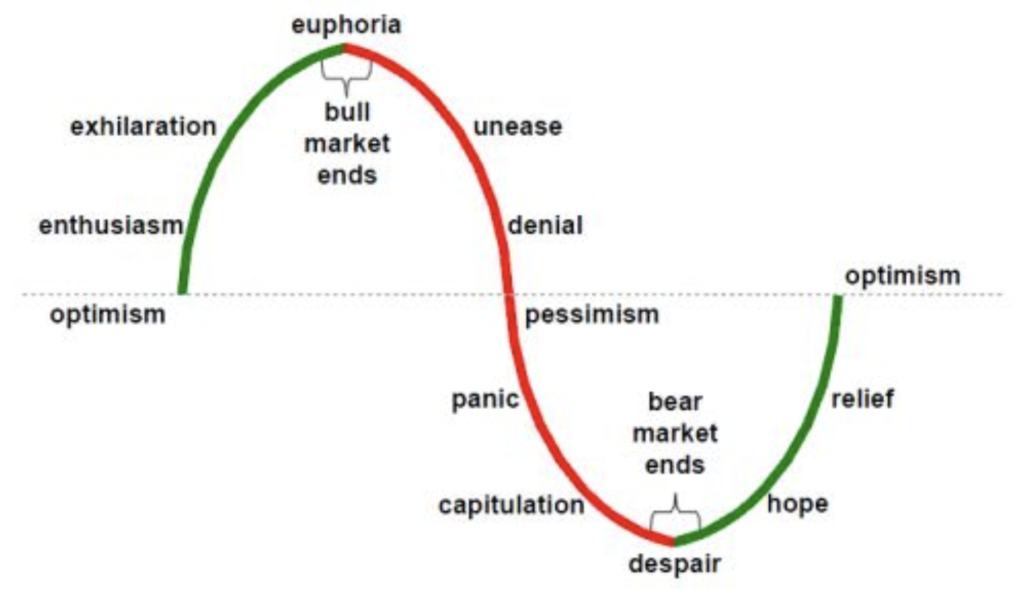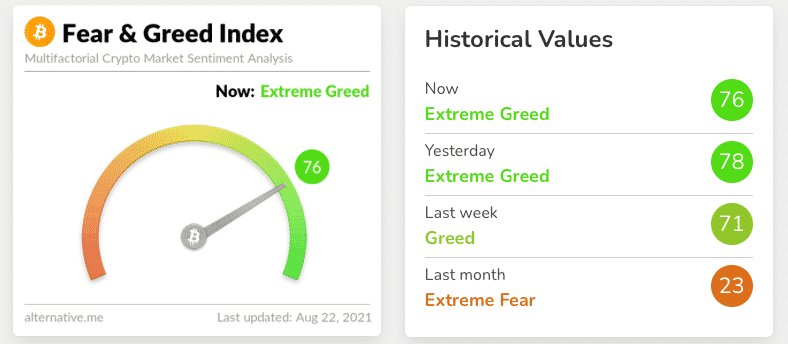The CNN Greed and Fear Index is a sentiment indicator that tracks the level of fear or greed in the stock market. This index is designed to help investors gauge the sentiment of the market and make more informed investment decisions. The index measures the levels of seven key indicators, including stock price momentum, trading volume, and market volatility, and assigns a score ranging from 0 to 100.
In recent years, the CNN Greed and Fear Index has gained popularity among investors who want to take a contrarian approach to investing. When the index is at an extreme level of fear, it may signal a buying opportunity, as market sentiment may have reached a point of excessive negativity. On the other hand, when the index is at an extreme level of greed, it may signal a selling opportunity, as market sentiment may have reached a point of excessive optimism.
In this blog article, we will dive deeper into the CNN Greed and Fear Index, exploring its history, how it is calculated, and how it can be used to make more informed investment decisions. We will also examine the limitations of the index and discuss how it should be used in conjunction with other technical and fundamental analysis techniques. By the end of this article, readers will have a better understanding of how the CNN Greed and Fear Index can be a valuable tool for investors seeking to stay ahead of the market.

What is the CNN Fear and Greed Index?
The CNN Greed and Fear Index is calculated using seven different indicators, each weighted differently in the final calculation. The seven indicators used are: stock price momentum, stock price strength, stock price breadth, put and call options, junk bond demand, market volatility, and safe haven demand.
The stock price momentum, stock price strength, and stock price breadth indicators all measure the performance of the stock market itself. These indicators look at factors such as the number of stocks that are advancing versus declining, the percentage of stocks trading above their moving averages, and the strength of the overall trend in the market.
The put and call options indicator looks at the buying and selling of put and call options, which are derivatives used to bet on whether the market will rise or fall. High levels of put buying indicate fear in the market, while high levels of call buying indicate greed.
The junk bond demand indicator looks at the demand for high-yield, high-risk bonds, which are often seen as a measure of risk appetite in the market. High demand for these bonds indicates greed, while low demand indicates fear.
The market volatility indicator looks at the level of volatility in the stock market, as measured by the VIX index. High levels of volatility indicate fear, while low levels indicate greed.
Finally, the safe haven demand indicator looks at the demand for safe-haven assets such as gold and the Japanese yen. High demand for these assets indicates fear, while low demand indicates greed.
Each of these indicators is assigned a weight in the final calculation of the index, with stock price momentum and junk bond demand given the highest weights, and safe haven demand given the lowest weight. The resulting index is a single number ranging from 0 to 100, with readings below 20 indicating extreme fear and readings above 80 indicating extreme greed.

How to Use the Index to Make Money
The CNN Greed and Fear Index can be a useful tool for investors who want to take a contrarian approach to investing. When the index is at an extreme level of fear, it may signal a buying opportunity, as market sentiment may have reached a point of excessive negativity. On the other hand, when the index is at an extreme level of greed, it may signal a selling opportunity, as market sentiment may have reached a point of excessive optimism.
To use the index to make investment decisions, investors should first identify their investment objectives and risk tolerance. Investors who are more risk-averse may prefer to wait for the index to reach an extreme level of fear before buying stocks, while investors who are more risk-tolerant may be comfortable buying stocks even when the index is at a higher level of greed.
Once the appropriate investment strategy has been identified, investors can use the index to identify potential buying or selling opportunities. For example, if the index is at an extreme level of fear, investors may look for stocks that have been oversold and may be undervalued. Conversely, if the index is at an extreme level of greed, investors may look for stocks that have been overbought and may be overvalued.
It is important to note, however, that the CNN Greed and Fear Index should not be used in isolation and should be combined with other technical and fundamental analysis techniques to make informed trading decisions. Additionally, the index is based on historical data and may not accurately predict future market trends.
Overall, the CNN Greed and Fear Index can be a useful tool for investors who want to track the sentiment of the market and potentially take a contrarian approach to investing. By using the index in conjunction with other analysis techniques, investors can make more informed trading decisions and potentially achieve greater profitability in the long run. However, it is important to always remember that investing involves risk and there is no guarantee of success.
Compare the Fear and Greed Index to Others
There are many indices that investors can use to track the performance of the stock market and the sentiment of market participants. Here is a comparison of the CNN Greed and Fear Index to some other well-known indices:
| Index | Description | Calculation Methodology | Range |
|---|---|---|---|
| CNN Greed and Fear | Measures the level of fear and greed in the market | Uses 7 indicators to calculate an index from 0-100 | 0-100 |
| CBOE Volatility Index (VIX) | Measures the level of volatility in the market | Based on the implied volatility of S&P 500 index options | 0-100 |
| S&P 500 Index | Measures the performance of the top 500 publicly traded US companies | Market capitalization-weighted index | Varies |
| Dow Jones Industrial Average (DJIA) | Measures the performance of 30 large-cap US companies | Price-weighted index | Varies |
| Nasdaq Composite Index | Measures the performance of all companies listed on the Nasdaq stock exchange | Market capitalization-weighted index | Varies |
The CNN Greed and Fear Index is unique in that it specifically measures market sentiment, as opposed to measuring performance or volatility. It uses a combination of technical and fundamental indicators to calculate an index that ranges from 0-100, with readings below 20 indicating extreme fear and readings above 80 indicating extreme greed.
The CBOE Volatility Index, also known as the VIX, measures the level of volatility in the market by tracking the implied volatility of options on the S&P 500 index. It is often referred to as the “fear index” because it tends to spike during times of market uncertainty or downturns.
The S&P 500 Index and the Dow Jones Industrial Average are both widely used benchmarks for the overall performance of the US stock market. The S&P 500 Index tracks the performance of the top 500 publicly traded companies in the US, while the Dow Jones Industrial Average tracks the performance of 30 large-cap companies. Both indices are market capitalization-weighted, meaning that larger companies have a greater impact on the index.
Finally, the Nasdaq Composite Index tracks the performance of all companies listed on the Nasdaq stock exchange. It is also market capitalization-weighted and is often used as a benchmark for the technology sector.
Overall, each of these indices has its own unique characteristics and can be useful for different types of investors. By understanding the differences between these indices, investors can choose the one that best fits their investment goals and risk tolerance.
n.b: this is not financial advice
